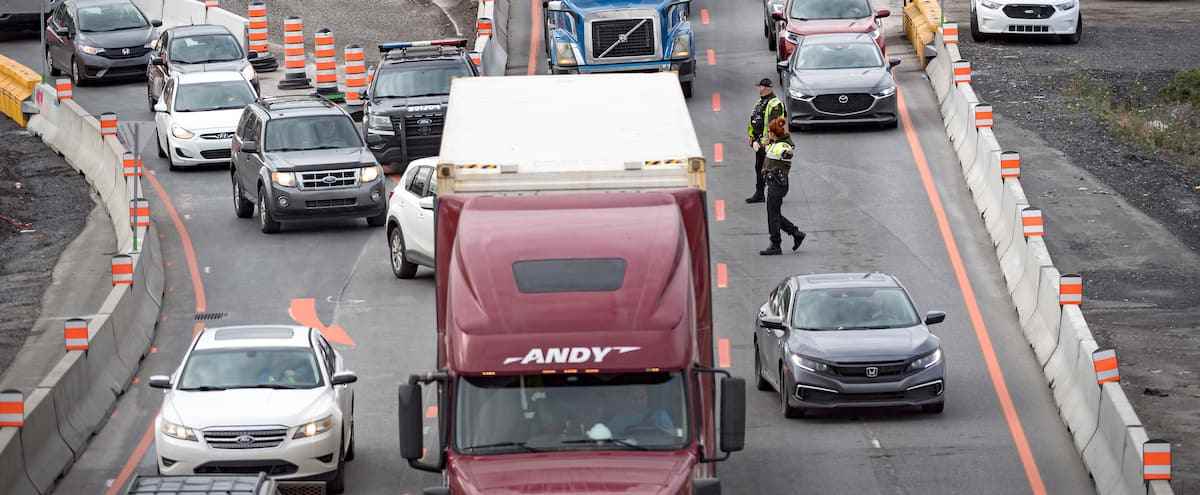If the carnage planned in the Hippolyte-Lafontaine tunnel did not materialize on Monday, carriers are still expecting a major “puzzle” which will also have impacts for both their customers and their drivers.
• Read also: Less dense traffic than anticipated to enter the island of Montreal
• Read also: To say that it might just get worse…
“Our terminal is on rue de la Province, in Longueuil, three blocks from the tunnel. It is sure that there will be impacts”, launches Marcus Deschênes, president of Gilmyr, based in Montmagny.
The solution put in place for the moment will be felt on the driver’s schedules.
“We will try to fit our overnight trips to the island, but we won’t always be able to. There will be delays soon,” said the man who owns 140 trucks.
Difficult recruitment
For Transcol, in Saguenay-Lac-Saint-Jean, night transport will also be more frequent, nothing to attract truck drivers.
“We are having more and more difficulty in the regions finding drivers who want to go to the metropolis. People have a choice of jobs with labor shortages. The Montreal region is not the first card that will come out in the choice of drivers, ”believes Caroline Girard, general manager of the company which has a hundred trucks.
She adds that the regulations on the maximum number of driving hours will be “an additional stress for drivers” who will see time slip away as they are stuck in traffic.
A situation that arises when this industry has already tasted it with the pandemic.
“It’s a perpetual big headache. You have to be very positive at the head of a transport company for two or three years. It’s rock and roll,” admits Ms. Girard.
Regional effects
These traffic problems in Montreal will affect the regions.
“We send 53-foot trailers to pick up goods (in Montreal). We untangle them here and we’ll deliver the equipment. We supply contractors in Saguenay-Lac-Saint-Jean, on the North Shore, all the north, Missitissini, the large dams. It really impacts all regional entrepreneurs. The further you are, the longer the delay is likely to be. At the end of the chain, the delay will sometimes be longer than the delay at the beginning”, she estimates.
“Ten years ago, we could afford to offer service (delivery) in 24 hours from Montreal. There, we no longer guaranteed a 48-hour service. Now, we will no longer guarantee a deadline, ”she warns.
matter of weeks
Ms. Girard thinks that it is in the medium term that the impacts of the work in the bridge-tunnel will be the most visible.
Robert Leblanc, general manager of Transport Besner, in Lévis, fears that they will show up soon enough.
“We didn’t have a major impact this morning, but it’s day 1. We’ll talk about it in two weeks,” he says.
The company he runs operates 90 trucks. It only transports full loads (for a single customer), mainly from the Quebec region to Ontario and the United States, but also a little to Montreal. In theory it can, a little more than others, circumvent the tunnel.
Contagion
“Traffic in general on the island is major. The tunnel is the epicenter. The work will cause traffic everywhere, even in the West Island, that’s the problem. When we get to Repentigny, there will be more traffic on the 40, there will be even more traffic on the Champlain Bridge, the 30 will be more congested, ”thinks Mr. Leblanc.
“The tunnel connects Boucherville and Montreal East where there are a lot of big companies. it will be difficult to circumvent at times”, he adds.
A nightmare
The industry could most likely charge additional fees to customers on the island of Montreal.
“Montreal is a plague for truck drivers. They want to avoid going there at all costs. It’s gonna be even worse. We are in labor shortage and we are looking for a solution for our drivers. When you enter the island and it takes you two hours to cover 30 km, it is not profitable either for the driver, who is paid by the mile (1.6 km), or for the company,” concludes Mr. The White.
